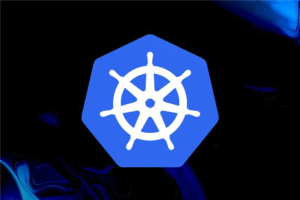
How a BDE Connects Business Vision With Technology
How a BDE Connects Business Vision With Technology Kumkum Kumari 21/11/2025At Speqto, we work with organizations that are constantly evolving entering new markets, scaling operations, or […]

Author: Charu Rajput
Date: 27 October 2025
 Meta Description:
Meta Description:
Master Kubernetes networking from Pods to Ingress. Learn how communication flows inside a cluster, how Services expose workloads, and how Ingress manages external traffic efficiently and securely.
Introduction
Kubernetes has become the backbone of modern application deployment, enabling organizations to achieve scalability, reliability, and automation. However, beneath its orchestration capabilities lies one of its most powerful yet complex aspects networking.
For DevOps engineers, understanding how networking operates inside a Kubernetes cluster is essential. It governs how containers communicate, how services are exposed, and how external users interact with applications. This article provides a comprehensive understanding of Kubernetes networking from Pods to Services and Ingress, helping you design secure and efficient communication in your cluster.
Every Kubernetes application starts with Pods the smallest deployable units in the cluster. Each Pod typically encapsulates one or more containers that share the same network namespace. This means containers within a Pod can communicate through localhost, sharing the same IP address and ports.
When Pods are created, Kubernetes assigns them unique IP addresses within a flat, cluster-wide network. This ensures that any Pod can communicate with any other Pod across nodes without the need for Network Address Translation (NAT).
However, there’s one challenge Pods are ephemeral. They can be terminated and recreated with new IP addresses at any time. Relying directly on Pod IPs for communication would therefore be unstable and unreliable. This is where Services come into play.
A Service in Kubernetes acts as a stable networking layer that provides a consistent IP address and DNS name for a set of Pods. Services use label selectors to dynamically route traffic to the appropriate Pods, even as they scale up or down.
Kubernetes supports multiple types of Services:
ClusterIP: Exposes the Service internally within the cluster. It’s used for internal communication between microservices, such as from a frontend to a backend.
NodePort: Makes the Service accessible externally by opening a static port on each Node. It’s simple but not ideal for production due to limited flexibility.
LoadBalancer: Automatically provisions a cloud-based load balancer that routes external traffic to the Service. Commonly used in production environments on AWS, Azure, or GCP.
ExternalName: Maps the Service to an external DNS name, useful for integrating with external APIs or legacy systems.
By abstracting away the dynamic nature of Pods, Services ensure consistent and reliable communication across your applications.
While Services enable stable internal communication, Ingress manages how external traffic reaches your applications inside the cluster. It acts as an intelligent entry point that routes HTTP and HTTPS requests based on hostnames and paths.
Ingress resources work in conjunction with Ingress Controllers like NGINX, Traefik, or AWS ALB Controller. These controllers interpret Ingress rules and configure load balancing, SSL termination, and path-based routing automatically.
The benefits of Ingress are significant:
Centralized control over all external traffic
Simplified SSL/TLS management
Cost efficiency (one entry point instead of multiple load balancers)
Greater flexibility with routing rules
In short, Ingress acts as the “front door” to your Kubernetes applications.
By default, Kubernetes allows unrestricted communication between all Pods in a cluster. While this simplifies connectivity, it poses serious security risks in production environments.
Network Policies solve this problem by defining which Pods are allowed to communicate with each other. They act as a firewall at the Pod level, restricting inbound and outbound traffic based on labels, namespaces, or IP ranges.
With Network Policies, DevOps engineers can enforce a zero-trust model allowing only essential communication paths while blocking everything else. This enhances both security and compliance across environments.
Kubernetes itself does not handle networking directly; it relies on CNI (Container Network Interface) plugins to implement networking functionality. CNI plugins are responsible for creating network interfaces, assigning IP addresses, and enforcing network rules.
Popular CNI plugins include:
Calico: Offers high-performance networking and robust Network Policy support.
Flannel: Lightweight and easy to configure; ideal for small clusters.
Cilium: Uses eBPF technology for high scalability and observability.
Weave Net: Simplifies cluster networking and supports encryption.
The choice of CNI plugin depends on your infrastructure, security needs, and scalability requirements.
Despite its flexibility, Kubernetes networking can present challenges such as:
DNS resolution failures: Often caused by CoreDNS misconfiguration or resource constraints.
Pod-to-Pod connectivity issues: May occur due to missing or misconfigured CNI components.
Ingress or LoadBalancer latency: Typically related to misrouted traffic or inefficient health checks.
Network Policy misconfigurations: Can accidentally block legitimate traffic.
Implement Network Policies: Restrict communication between Pods and namespaces.
Use Ingress Controllers for External Traffic: Simplify routing and SSL management.
Monitor Network Performance: Integrate Prometheus and Grafana for visibility.
Secure Cluster Communication: Use mutual TLS for Pod-to-Pod and Service-to-Service encryption.
Choose the Right CNI Plugin: Align your network architecture with performance and security goals.
Networking is the lifeline of Kubernetes enabling communication between containers, workloads, and users. By understanding the roles of Pods, Services, and Ingress, DevOps engineers can design reliable, secure, and scalable architectures that support complex microservice deployments.

How a BDE Connects Business Vision With Technology
How a BDE Connects Business Vision With Technology Kumkum Kumari 21/11/2025At Speqto, we work with organizations that are constantly evolving entering new markets, scaling operations, or […]

Apache JMeter Demystified: Your 7-Stage Blueprint for a Seamless First Performance Test
Apache JMeter Demystified: Your 7-Stage Blueprint for a Seamless First Performance Test Megha Srivastava 21 November 2025 In the intricate world of software development and deployment, ensuring a robust user experience is paramount. A slow application can quickly deter users, impacting reputation and revenue. This is where Apache JMeter emerges as an indispensable tool, offering […]

STRIDE Simplified: A Hands-On Blueprint for Pinpointing Software Threats Effectively
STRIDE Simplified: A Hands-On Blueprint for Pinpointing Software Threats Effectively Megha Srivastava 21 November 2025 In the intricate landscape of modern software development, proactive security measures are paramount. While reactive incident response is crucial, preventing vulnerabilities before they become exploits is the hallmark of robust software engineering. This is where threat modeling, and specifically the […]

From Static to Streaming: A Practical Developer’s Guide to Real-time Applications Using GraphQL Subscriptions
From Static to Streaming: A Practical Developer’s Guide to Real-time Applications Using GraphQL Subscriptions Shakir Khan 21 November 2025 The Paradigm Shift: From Static to Streaming Experiences In an era where user expectations demand instant gratification, the web has rapidly evolved beyond its static origins. Today, a modern application’s success is often measured by its […]

The TanStack Query Edge: Deep Dive into Advanced Caching for Optimal Application Speed
The TanStack Query Edge: Deep Dive into Advanced Caching for Optimal Application Speed Shubham Anand 21 November 2025 In the relentless pursuit of seamless user experiences and lightning-fast web applications, data management stands as a formidable challenge. Modern front-end frameworks demand intelligent solutions to handle asynchronous data, and this is precisely where TanStack Query (formerly […]